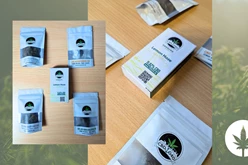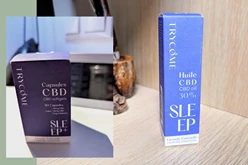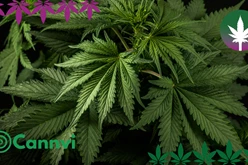Cannabinoids are chemical compounds found in the hemp plant. There are natural, semi-synthetic and synthetic cannabinoids. In this article we take a look at the differences between them and what this means for consumers.
Austria: HHC ban from March 23, 2023
On March 23, 2023, the Austrian Ministry of Health included HHC in the regulation on new psychoactive substances (NPS). This means that the production and trading of synthetic HHC is prohibited in Austria.
To the regulationNatural cannabinoids vs. semi-synthetic cannabinoids
Natural cannabinoids are extracted from the hemp plant and are the most common type of cannabinoid. Semi-synthetic cannabinoids, on the other hand, are hemp-based products that are produced through chemical processes. The most common semi-synthetic cannabinoids are HHC and H4-CBD. HHC was discovered in the 1940s by chemist Roger Adams.

Synthetic cannabinoids
Synthetic cannabinoids or cannabinoid mimetics are manufactured artificially and have no similarity to the structure of natural cannabinoids. However, they act on the cannabinoid system and are often much stronger than natural cannabinoids. That's why they can be very dangerous.
HHC
Like CBD, HHC is also a fundamentally natural cannabinoid that is obtained from the hemp plant. However, HHC only occurs in very small proportions in the hemp plant and complex processes are necessary to obtain significant quantities. Therefore, HHC is usually produced synthetically.
HHC has gained popularity in online communities in recent years due to its positive effects. It has become so popular that new HHC derivatives have been developed, including HHC-O-acetate and HHC-P, which are known for their unique properties.
HHC-O
One of the HHC derivatives is HHC-O, also known as Super HHC. It contains acetate, which makes it a prodrug that only becomes an active ingredient through metabolic processes. Our body's metabolism can break down acetate, making HHC readily available at the CB1 receptors. HHC-O has great medicinal effects and works slower than HHC but lasts longer. Its higher bioavailability makes it stronger than HHC alone and has a lower viscosity. It has a wide range of uses in food applications and its positive effects are stronger than HHC.
HHC-P
Another HHC derivative is HHC-P, also known as the king of cannabinoids. Hexahydrocannabiphorol (HHCP) has recently gained attention for its effectiveness and versatility. It is a phytocannabinoid and has unique properties that differentiate it from other cannabinoids. There are not many studies on HHC-P yet, but it is considered a promising cannabinoid and has the potential to have many positive effects.
H4 CBD
H4-CBD is a cannabinoid created by chemically hydrogenating CBD and has similar effects to CBD, but may be more potent. It has a high affinity for CB1 receptors in the brain and is currently not illegal in Austria. However, there is still little research on this cannabinoid to accurately determine its effects.

HHC ban in Austria and Finland
In March 2023, the Austrian Ministry of Health included HHC in the regulation on new psychoactive substances. From this date, the production and trade of HHC is no longer permitted in Austria. The possession and consumption of HHC remains unpunished. The decision was based on the fact that there are no known short-term or long-term health effects associated with hexahydrocannbinol. Finland has also imposed a ban on HHC.



.png?h=64&w=200&mode=max&scale=canvas&format=webp&autorotate=true)












.png)